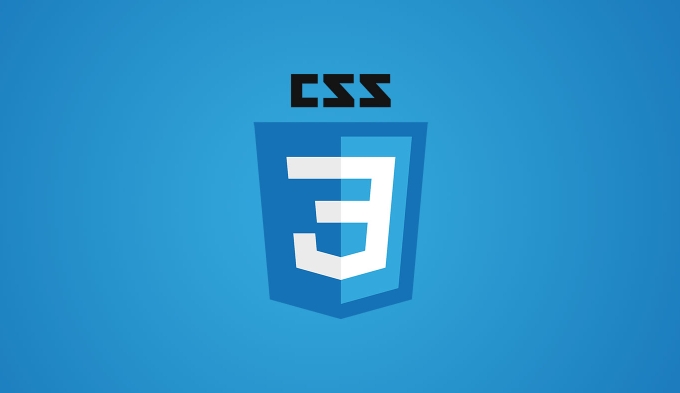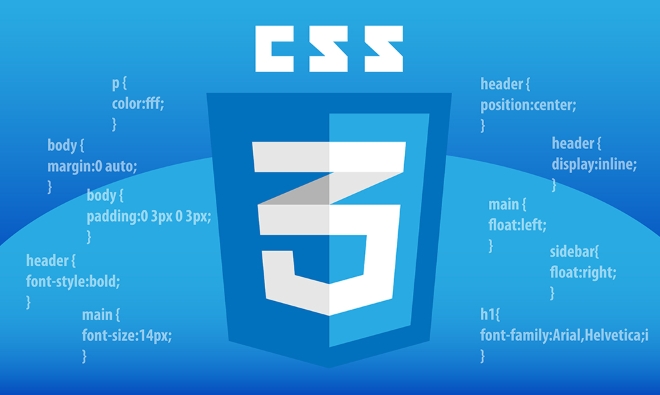When the content exceeds the container, it is necessary to use the overflow attribute of the CSS. Common scenarios include too long pop-up windows, truncated card information, and displaying some content in fixed height areas. How to use: 1.overflow: visible default overflow displays external; 2.overflow: hidden hides overflow content; 3.overflow: scroll always displays scroll bars; 4.overflow: auto displays scroll bars when auto exceeds. To achieve the ellipsis effect, you need to cooperate with other attributes: use white-space: nowrap and text-overflow: ellipsis to achieve single line omission, and use -webkit-line-clamp scheme or pseudo-element simulation for multiple lines omissions.

Sometimes the page content is too much and the layout is broken. At this time, you need to use the CSS overflow attribute to handle overflow content. It helps you control whether to hide, scroll or leave it alone when the content exceeds the container.

When do you need to use overflow?
When you set a fixed height or width for an element, or use max-width / max-height , it is easy to "run out" as much content. For example, if there are too many texts in a card component, or if a fixed-size pop-up window cannot be installed, these situations can be controlled by overflow .

Common scenarios include:
- The pop-up content is too long and needs to be scrolled
- Card information truncated to display ellipsis
- Only some content is displayed in the fixed height area
At this time, you need to consider adding an overflow attribute to the container.

Overflow Common values and uses
CSS's overflow supports several commonly used values, each with different effects:
-
visible(default): The content will not be cropped and will be displayed outside the box -
hidden: Exceeding the part directly hides -
scroll: Scroll bars are displayed regardless of whether the content is exceeded or not -
auto: The scroll bar will be displayed only if the content exceeds the content, and if it does not exceed the content, it will not be displayed.
For example, if you want a div to automatically appear after the content exceeds the content, you can write it like this:
.box {
width: 200px;
max-height: 100px;
overflow: auto;
} If you just want the content not to overflow and don't want the user to scroll to view it, use overflow: hidden; .
What should I do if I want the text to overflow and display the ellipsis?
It is not enough to just use overflow: hidden; it is necessary to cooperate with other attributes to achieve the effect of "...". Commonly, single-line omission:
.text {
white-space: nowrap;
overflow: hidden;
text-overflow: ellipsis;
} If multiple lines are omitted, you can use -webkit-line-clamp :
.multi-line {
display: -webkit-box;
-webkit-box-orient: vertical;
-webkit-line-clamp: 3;
overflow: hidden;
}Note that this method has good compatibility, but not all browsers are natively supported. If compatibility requirements are high, pseudo-elements can also be used to simulate ellipses.
Basically that's all. Although overflow looks simple, it is very practical in actual layout. The key is to understand the behavioral differences between different values and how to use them in conjunction with other attributes.
The above is the detailed content of Managing overflow content with css overflow property. For more information, please follow other related articles on the PHP Chinese website!

Hot AI Tools

Undress AI Tool
Undress images for free

Undresser.AI Undress
AI-powered app for creating realistic nude photos

AI Clothes Remover
Online AI tool for removing clothes from photos.

Clothoff.io
AI clothes remover

Video Face Swap
Swap faces in any video effortlessly with our completely free AI face swap tool!

Hot Article

Hot Tools

Notepad++7.3.1
Easy-to-use and free code editor

SublimeText3 Chinese version
Chinese version, very easy to use

Zend Studio 13.0.1
Powerful PHP integrated development environment

Dreamweaver CS6
Visual web development tools

SublimeText3 Mac version
God-level code editing software (SublimeText3)

Hot Topics
 CSS tutorial for creating loading spinners and animations
Jul 07, 2025 am 12:07 AM
CSS tutorial for creating loading spinners and animations
Jul 07, 2025 am 12:07 AM
There are three ways to create a CSS loading rotator: 1. Use the basic rotator of borders to achieve simple animation through HTML and CSS; 2. Use a custom rotator of multiple points to achieve the jump effect through different delay times; 3. Add a rotator in the button and switch classes through JavaScript to display the loading status. Each approach emphasizes the importance of design details such as color, size, accessibility and performance optimization to enhance the user experience.
 Addressing CSS Browser Compatibility issues and prefixes
Jul 07, 2025 am 01:44 AM
Addressing CSS Browser Compatibility issues and prefixes
Jul 07, 2025 am 01:44 AM
To deal with CSS browser compatibility and prefix issues, you need to understand the differences in browser support and use vendor prefixes reasonably. 1. Understand common problems such as Flexbox and Grid support, position:sticky invalid, and animation performance is different; 2. Check CanIuse confirmation feature support status; 3. Correctly use -webkit-, -moz-, -ms-, -o- and other manufacturer prefixes; 4. It is recommended to use Autoprefixer to automatically add prefixes; 5. Install PostCSS and configure browserslist to specify the target browser; 6. Automatically handle compatibility during construction; 7. Modernizr detection features can be used for old projects; 8. No need to pursue consistency of all browsers,
 Styling visited links differently with CSS
Jul 11, 2025 am 03:26 AM
Styling visited links differently with CSS
Jul 11, 2025 am 03:26 AM
Setting the style of links you have visited can improve the user experience, especially in content-intensive websites to help users navigate better. 1. Use CSS's: visited pseudo-class to define the style of the visited link, such as color changes; 2. Note that the browser only allows modification of some attributes due to privacy restrictions; 3. The color selection should be coordinated with the overall style to avoid abruptness; 4. The mobile terminal may not display this effect, and it is recommended to combine it with other visual prompts such as icon auxiliary logos.
 Creating custom shapes with css clip-path
Jul 09, 2025 am 01:29 AM
Creating custom shapes with css clip-path
Jul 09, 2025 am 01:29 AM
Use the clip-path attribute of CSS to crop elements into custom shapes, such as triangles, circular notches, polygons, etc., without relying on pictures or SVGs. Its advantages include: 1. Supports a variety of basic shapes such as circle, ellipse, polygon, etc.; 2. Responsive adjustment and adaptable to mobile terminals; 3. Easy to animation, and can be combined with hover or JavaScript to achieve dynamic effects; 4. It does not affect the layout flow, and only crops the display area. Common usages are such as circular clip-path:circle (50pxatcenter) and triangle clip-path:polygon (50%0%, 100 0%, 0 0%). Notice
 What is the difference between display: inline, display: block, and display: inline-block?
Jul 11, 2025 am 03:25 AM
What is the difference between display: inline, display: block, and display: inline-block?
Jul 11, 2025 am 03:25 AM
Themaindifferencesbetweendisplay:inline,block,andinline-blockinHTML/CSSarelayoutbehavior,spaceusage,andstylingcontrol.1.Inlineelementsflowwithtext,don’tstartonnewlines,ignorewidth/height,andonlyapplyhorizontalpadding/margins—idealforinlinetextstyling
 What is the CSS Painting API?
Jul 04, 2025 am 02:16 AM
What is the CSS Painting API?
Jul 04, 2025 am 02:16 AM
TheCSSPaintingAPIenablesdynamicimagegenerationinCSSusingJavaScript.1.DeveloperscreateaPaintWorkletclasswithapaint()method.2.TheyregisteritviaregisterPaint().3.ThecustompaintfunctionisthenusedinCSSpropertieslikebackground-image.Thisallowsfordynamicvis
 How to create responsive images using CSS?
Jul 15, 2025 am 01:10 AM
How to create responsive images using CSS?
Jul 15, 2025 am 01:10 AM
To create responsive images using CSS, it can be mainly achieved through the following methods: 1. Use max-width:100% and height:auto to allow the image to adapt to the container width while maintaining the proportion; 2. Use HTML's srcset and sizes attributes to intelligently load the image sources adapted to different screens; 3. Use object-fit and object-position to control image cropping and focus display. Together, these methods ensure that the images are presented clearly and beautifully on different devices.
 What are common CSS browser inconsistencies?
Jul 26, 2025 am 07:04 AM
What are common CSS browser inconsistencies?
Jul 26, 2025 am 07:04 AM
Different browsers have differences in CSS parsing, resulting in inconsistent display effects, mainly including the default style difference, box model calculation method, Flexbox and Grid layout support level, and inconsistent behavior of certain CSS attributes. 1. The default style processing is inconsistent. The solution is to use CSSReset or Normalize.css to unify the initial style; 2. The box model calculation method of the old version of IE is different. It is recommended to use box-sizing:border-box in a unified manner; 3. Flexbox and Grid perform differently in edge cases or in old versions. More tests and use Autoprefixer; 4. Some CSS attribute behaviors are inconsistent. CanIuse must be consulted and downgraded.






